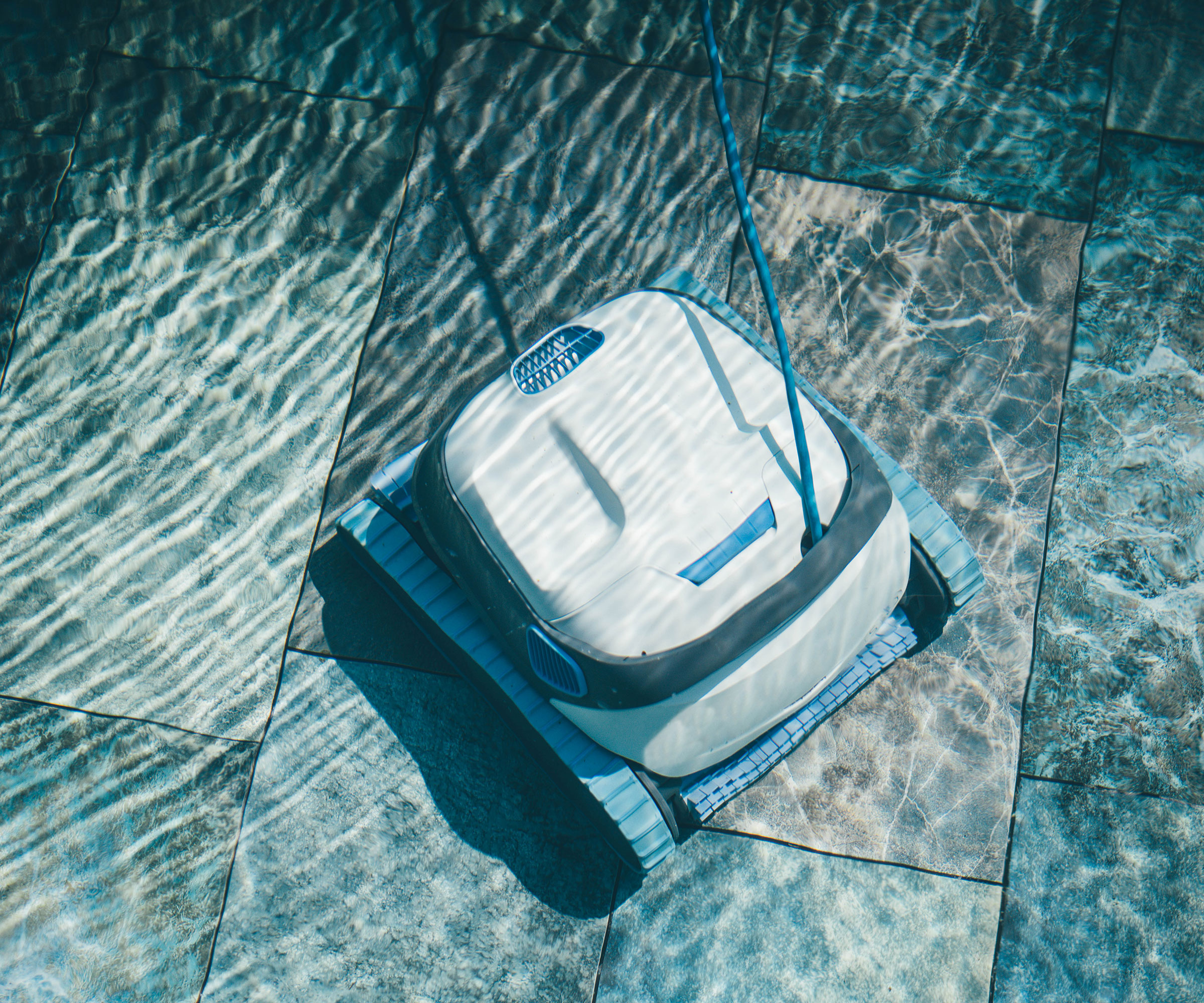How to get dead algae out of a pool – the lowdown on cleaning up
Remove the dead algae after treating your pool with our step-by-step guide


Taking action to get rid of the algae in your pool is an essential task because you shouldn’t swim in a pool with algae. But once you’ve killed it, the issue of getting the dead algae out of the pool remains, so how should you tackle it?
Pools can suffer from an algae bloom if the problem is not tackled quickly since the pool is an ideal environment for algae to thrive. Algae spores are a natural phenomenon and can be blown into your pool as well get in via rainfall, in dirt, or even via swimwear.
But once you’ve dealt successfully with algae, you’re left with a cleanup job and these are the steps you need to follow, and the expert advice that’s essential to the job.
Find out how to rid your pool of dead algae
Algae spores occur naturally and algae grow in pools because it’s an environment that suits them perfectly. ‘Algae can accumulate from poor pool chemistry or poor circulation of water,’ explains Karen Larson, co-founder of Soake Pools. If they bloom they can turn the pool green and they create unhealthy conditions for swimming.
Testing the water regularly and balancing it as necessary, shocking the pool or using an algaecide can kill it, but after that you’re left with dead algae, so the final stage in cleaning up is getting dead algae out of the pool and these are the steps you need to take.
1. Use a pool net
Begin the cleanup of dead algae by fishing out what you can. ‘Use a pool net to remove large algae or other foreign material clumps,’ advises Hubert Miles, certified pool and spa inspector through NACHI.
This ProTuff 20in fine mesh pool skimmer from Amazon is highly rated and has a super strong frame for durability.
Design expertise in your inbox – from inspiring decorating ideas and beautiful celebrity homes to practical gardening advice and shopping round-ups.

2. Get brushing
The next stage requires a little effort. ‘Scrub the walls and floor of the pool using a brush broom,’ advises Hubert Miles.
This pool brush head from Amazon is compatible with most standard pool poles. It can be used to clean both the floor and walls of your pool, and the design means it can easily get into tricky corners.
3. Vacuum the pool floor
To clean up the pool floor, using a vacuum is best. ‘A pool vacuum is the most effective tool for removing dead algae on the pool floor,’ says Hubert Miles.
This Dolphin Nautilus CC Plus robotic pool vacuum cleaner on Amazon is one of its best-sellers. It can climb the walls of your pool to ensure it cleans all the surfaces, and you simply plug it in, drop it in your pool and let it get to work.

4. Deal with the pool filter
The pool filter has been processing water that’s contaminated, so now’s the time to clean it. ‘After vacuuming is complete, backwash your pool filter,’ advises Hubert Miles.
5. Run the pool pump and filtration system
After brushing and vacuuming to remove dead algae from the pool, run the pool pump and filtration system for a time. ‘I recommend continuously running the pool pump and filtration system for at least 24 to 48 hours,’ says Hubert Miles. ‘This extended period allows the system to circulate and filter the water thoroughly, ensuring the removal of any remaining debris or algae particles.’
6. Test the water
After you’ve finished getting the dead algae out of the pool, be sure to keep checking the water. ‘Monitor the pool’s chlorine and pH levels regularly and adjust them as needed,’ says Hubert.
It may be necessary to shock the pool to get the correct levels of chemicals required. Do bear in mind, too, that you should wait around 24-48 hours after shocking a pool before you swim in it.
FAQs
What happens to dead pool algae?
Dead pool algae is partly captured by the pool filter, which is why it is important to clean the filter after killing the algae that was contaminating the water.
However, dead algae can also remain on the pool floor and clinging on to its sides, which is why both brushing the pool and vacuuming are important to remove it from the pool. ‘Algae needs to be scrubbed off and then vacuumed up,’ says Karen Larson, co-founder, Soake Pools.
Pool flocculant can he helpful in treating algae growth that’s in its early stages, and it also makes it easier to vacuum out the particles.
What does algae look like when it dies?
Dead algae has a distinct appearance, looking grayish in color and dusty when it accumulates in the bottom of the pool. Once the pool water is clear, it’s easy to see down there.
Removing any dead algae from your pool is essential to ensure it's safe for everyone to swim in. A build-up of contaminants can be one of the main reasons for cloudy pool water too, so keep on top of your regular maintenance to ensure it remains as clean and clear as possible.

Sarah is a freelance journalist and editor. Previously executive editor of Ideal Home, she’s specialized in interiors, property and gardens for over 20 years, and covers interior design, house design, gardens, and cleaning and organizing a home for Homes & Gardens. She’s written for websites, including Houzz, Channel 4’s flagship website, 4Homes, and Future’s T3; national newspapers, including The Guardian; and magazines including Future’s Country Homes & Interiors, Homebuilding & Renovating, Period Living, and Style at Home, as well as House Beautiful, Good Homes, Grand Designs, Homes & Antiques, LandLove and The English Home among others. It’s no big surprise that she likes to put what she writes about into practice, and is a serial house renovator.